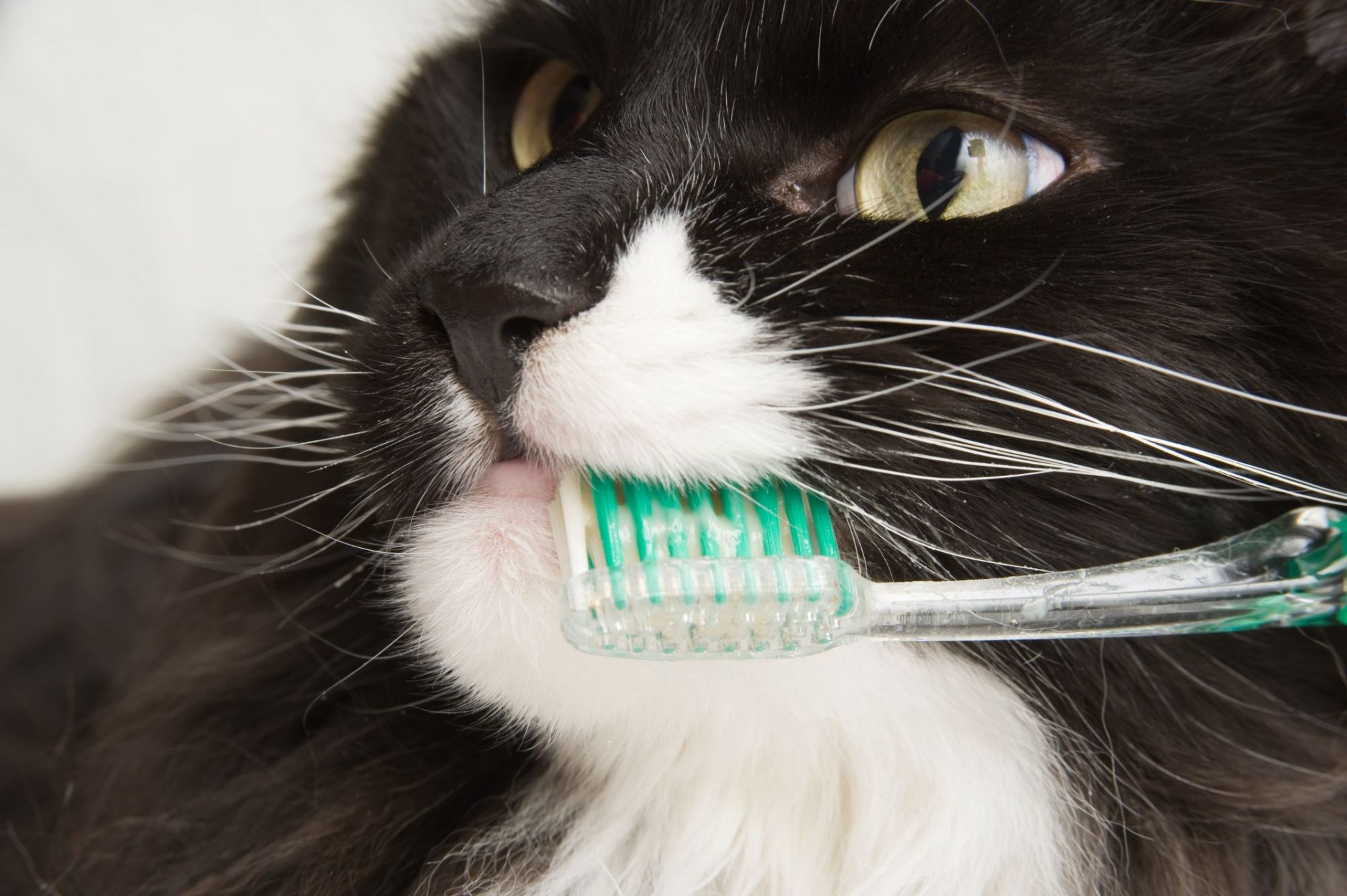When supported, each facet of feline wellness contributes to the larger picture of cat health. Nutrition, exercise, environmental enrichment, disease prevention, and safety are all critical, but without routine cat dental care, all other aspects of health are potentially compromised. The thing is, most cat owners don’t realize that problems are brewing inside their cat’s mouth. By the time we get even a faint whiff of kitty breath, plaque and tartar have already launched their attack.
Sharp and Pointy
Perhaps cat owners shy away from their cat’s mouth because of the dangerous appearance of the teeth. Designed to cut through skin and meat, cat teeth appear very different from our own. But we do share some similarities.
Humans and cats are both born toothless until baby teeth grow in. After infancy, the permanent, or second, set grows in. We also have about the same number of permanent teeth (30 for cats, 32 for humans). Lastly, both humans and cats benefit from lifelong habits that protect the teeth and gums from disease.
Cat Caries
The shape of feline teeth explains why cats rarely develop true cavities. With smooth, vertical surfaces, most feline teeth aren’t ideal for bacteria to grow. Plus, their meat-rich diet typically has fewer carbohydrates that break down into sugar. As a result, cat caries, or cavities, are rare.
Other Problems
Unfortunately, the combination of naturally-occurring oral bacteria and partially digested food creates plaque which creates a film on the teeth. The calcium-rich minerals in saliva harden the plaque into tartar, a yellow-brown buildup on the surface of teeth. As it accumulates near the gum line, gum tissue starts to recede away from the tooth.
Gingivitis is characterized by redness, swelling and pain along the gumline, and is referred to as the first stage of periodontal disease (out of four distinct stages).
Tooth Resorption
Periodontal disease can lead to tooth resorption, a process that causes tooth dentin to erode. The tooth is eventually replaced by a material like bone, bringing a great deal of sensitivity and pain to a cat. This can lead to infection and subsequent extraction in a huge majority of cats above age five.
Part of the Whole
Not only is periodontal disease painful for cats, but a huge point of concern regarding the health of the body’s major organs. Heart, kidney, and liver disease can all stem from oral bacteria leaching into the bloodstream and infecting other vital systems. Oral cancer can also be linked to poor dental hygiene.
Stop the Train
Part of a cat owner’s defense against periodontal disease includes regular brushing of their cat’s teeth and gums at home. This can take dedication and patience, but the reward is huge. Luckily, there are many products available (from tuna toothpaste to soft bristled brushes) that make cat dental care much easier.
Inspecting the mouth for any redness, swelling, bleeding, lost or broken teeth, foul breath, abscesses, and lumps/bumps is vital.
Cat Dental Care
Regular dental exams, cleanings, scalings, polishings, and digital X-rays are critical to overall health. A clear understanding of what is happening beneath the gum line helps to create an attainable treatment plan. We safely conduct cat dental care appointments under general anesthesia.
If we can help you with any questions or concerns about cat dental care, please give us a call at (404) 792-0700. Our vets are always here for you at Cat Care of Vinings.








